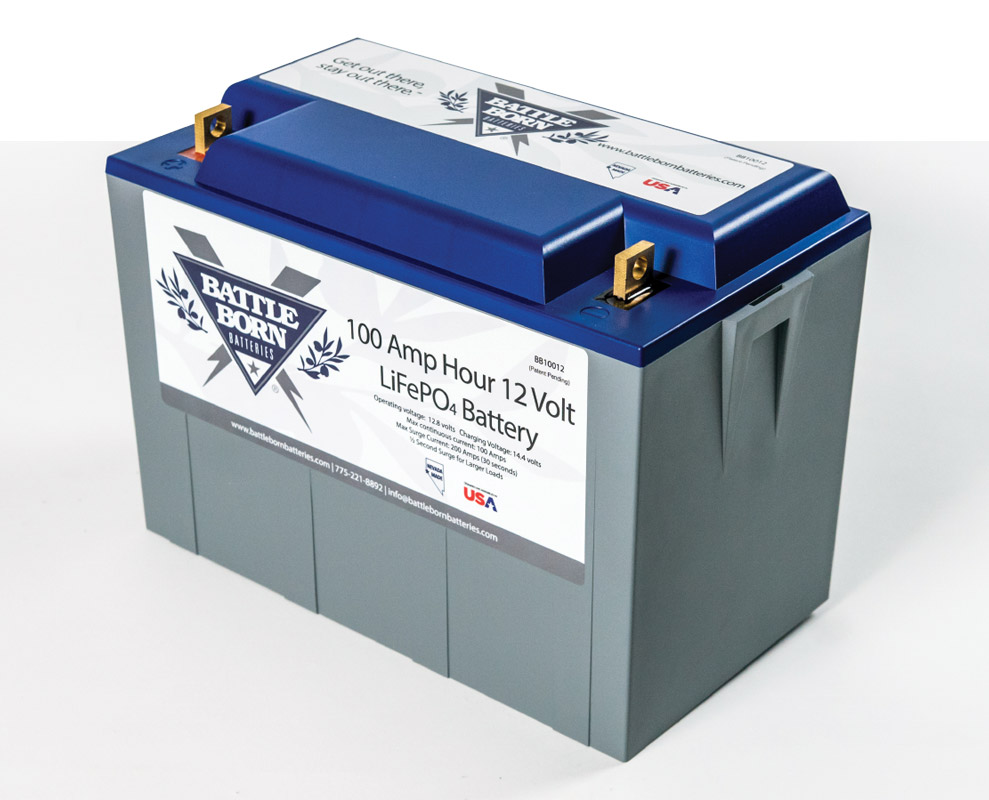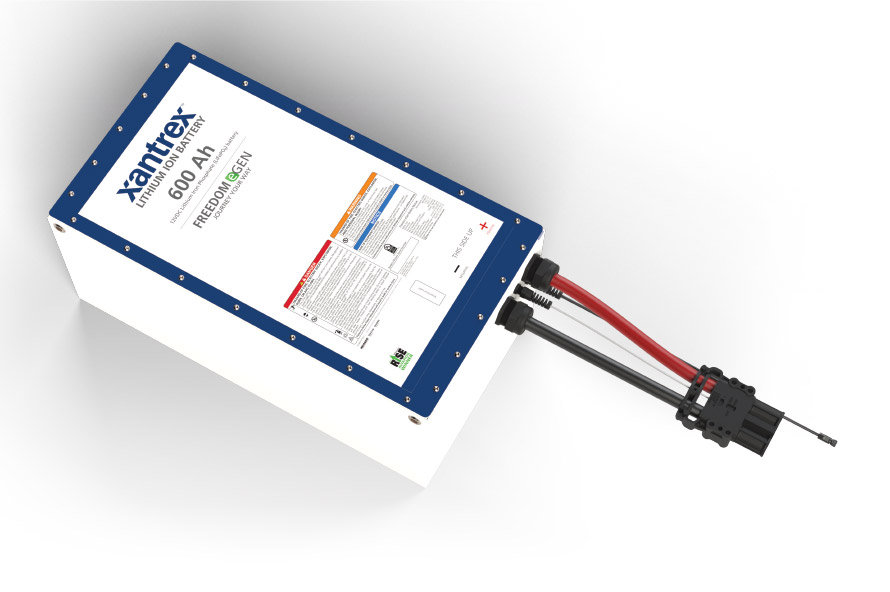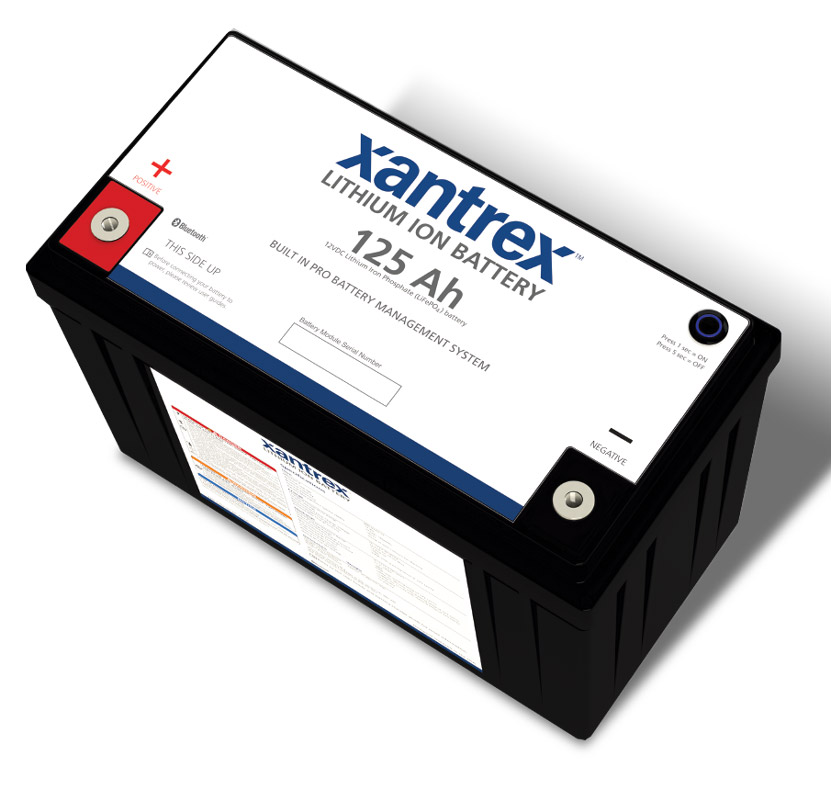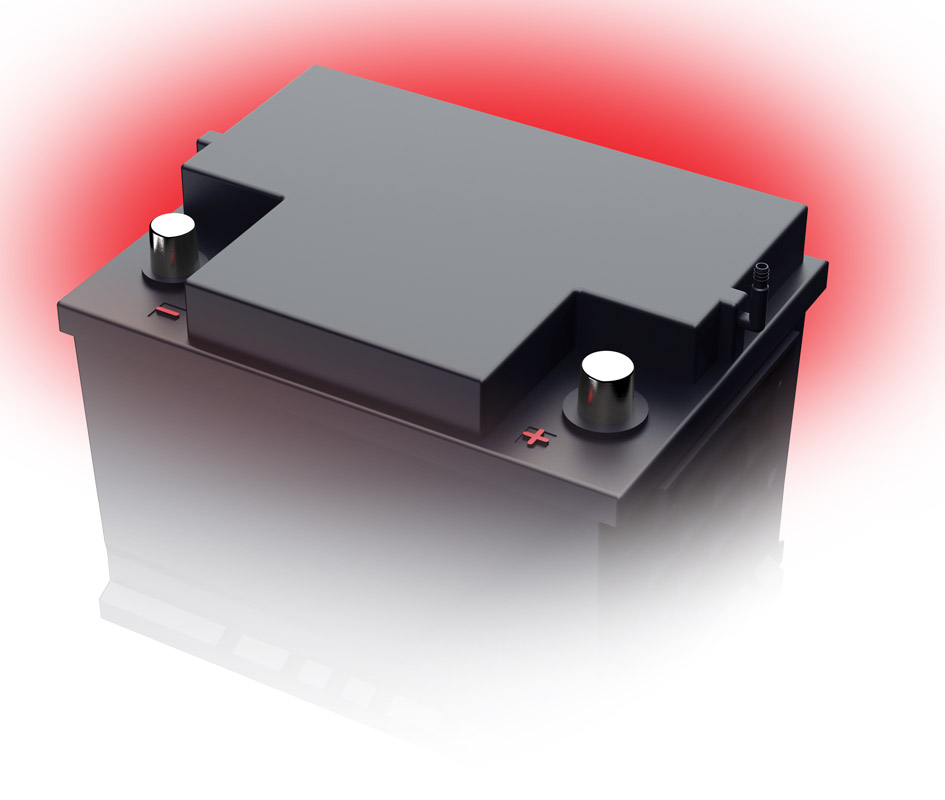Improving 12-volt DC systems using the latest technology can dramatically extend off-grid livability
One of the primary benefits of owning a motorhome is the ability to travel to out-of-the-way places while continuing to enjoy the comforts of home. Most of these comforts require a source of energy. Two battery banks supply power in motorhomes: one to start the engine and the other to operate 12-volt DC appliances and accessories while providing the output to the inverter for making 120-volt AC power when the generator is not running. When it comes to self-containment, the foundation is the house battery system.
Motorhome battery banks have evolved over the years. There was a time, long ago, when one battery or bank served both the chassis and house systems, which ran the risk of leaving the owners stranded with a dead battery and no way to start the engine. For the most part, the chassis and house batteries are entirely separate in modern motorhomes. The only thing connecting them is a battery charge/auxiliary engine start relay, found mostly in gas motorhomes.

Battle Born Batteries offers a 100-Ah 12-volt LiFePO4 pack with built-in battery-management system (BMS), ideal for a basic, reliable aftermarket move up to lithium.
Legacy Batteries
Most motorhomes are equipped from the factory with one or more flooded lead-acid (FLA) batteries, but there are other alternatives to consider to help extend any off-the-grid experience (more on that in a bit).
Legacy FLA batteries are fine for basic use, and if they’re maintained properly, they can last many years. Unfortunately, too many RVers don’t properly care for their motorhome’s batteries, which shortens service life considerably. Proper care includes monitoring the electrolyte level and refilling with distilled water, using a good quality multi-stage converter/charger and removing the batteries when storing the motorhome in frigid winter climates. Another drawback is that FLA batteries are also quite heavy.
There are maintenance-free options, including absorbent glass mat (AGM) and gel cell batteries, also known as valve-regulated lead-acid (VRLA). These are good choices when considering batteries for motorhomes and are available in varying capacities — and they are maintenance-free. Because of their construction, AGM and gel batteries can be mounted in any position, which can be beneficial in specific installation scenarios.
The electrolyte in AGM batteries is contained within a thin glass separator pad between the plates, instead of a flooded configuration. A gel cell is similar to an FLA battery, except that a gelling agent is added to the electrolyte. Gel batteries aren’t commonly used in the RV environment because of lower charging profiles and their sensitivity to heat. AGM batteries are much more forgiving, but both AGM and gel have specific charging requirements, requiring equipment that is adjustable for optimal performance and lifespan.
Lithium Technology
The latest battery technology making a splash in the RV sector in a big way is lithium. Lithium Iron Phosphate (LiFePO4) has many benefits over legacy battery technology but is not a “drop-in” replacement unless your motorhome has been set up to handle specific charging algorithms.
LiFePO4 battery packs are quite different from standard batteries. They are made up of a number of independent cells that are linked together and managed by an electronic battery management system (BMS). Lithium batteries can be damaged, even catastrophically, if they’re charged or discharged incorrectly. The BMS controls the charge rate and limits the amp draw and blocks charging when subjected to elements below freezing. The BMS also monitors the battery cells for faults as well as charge level and shuts the pack down once the cells are depleted or a fault is detected.

While the packs shown previously feature an integrated battery-management system (BMS), some styles require an external one, like this one from Xantrex.
LiFePO4 batteries are about half the weight of legacy batteries; this allows an RVer to carry twice the number of battery packs. And although lithium is far more expensive per pack than, FLA counterparts, for example, they can last up to 10 times longer: FLA batteries are designed to provide 300–500 charge/discharge cycles, while lithium batteries can handle upward of 5,000 cycles.
The last, and possibly biggest benefit of a lithium battery pack is higher capacity. Legacy batteries are able to be discharged to about 50% before they need to be recharged to prevent damage and a shortened lifespan. Modern lithium packs, on the other hand, show a maximum discharge of up to 98%, which includes an internally programmed safety factor in the BMS to prevent a thermal event. Once at the threshold discharge level, the BMS shuts down the battery pack to prevent damage.

For a higher level, more advanced and higher capacity option, Xantrex’s new 12-volt LiFePO4 option is rated at 125 Ah and features an on/off-status switch and Bluetooth connectivity via an app.
It’s pretty clear that the new LiFePO4 batteries are well worth the expenditure based on usability in the field and overall longevity. That said, proper installation and having the judicious use of a compatible charging system is essential. If your motorhome is equipped with an inverter/charger, it may be programmable for lithium. If not, the converter/charger must be replaced with a model that has lithium battery charging capabilities. While you’re at it, you may as well replace it with an inverter/charger, which will give you the added benefit of AC power from the new battery bank. More exotic inverters also allow concurrent output of 120-volt AC power to supplement campground electrical hookup or generator input.
Whichever chemistry you choose, or bank size you select, remember that your batteries are the foundation of your motorhome’s power system. Be sure to take proper care of them.
The Role of House Batteries
System Control: Many newer motorhome systems are computer-controlled using multiplex switching. These mini-computers turn circuits on and off via remote relays. They also act as an interface for the HVAC system, tank monitors, power monitor and generator starting/stopping. Some of these systems even have a global internet connect feature allowing access from anywhere using a smart device.
Lighting: House batteries operate the LED interior and exterior lighting in just about all new motorhomes.
HVAC: Heating, ventilation and air conditioning systems run on a combination of 12-volt DC power and 120-volt AC power, or solely on DC power. Often the control boards run on 12 volts DC and, in the case of air conditioners, the compressor and fan run on AC power.
Appliances: Refrigerators and water heaters run on energy sources including propane, 120-volt AC power and 12-volt DC power, depending on type/function.
Entertainment Systems: The motorhome’s stereo and some TVs work on 12-volt DC power, as do the antenna booster and satellite dish.
Electric Steps: These steps operate on 12-volt DC power and are connected to the house battery system.
Electric Awnings: Most awnings are powered by 12-volt DC power; however, there are some lateral-arm models on high-end coaches that require a 120-volt AC source.
Slideouts: Electric motors and hydraulic pumps used on slideout systems require 12-volt DC power.
Leveling Systems: Automatic leveling systems operate on 12-volt DC power. They are wired into the house or chassis batteries.
 Installation Considerations
Installation Considerations
Installing a renewable energy system, including batteries, should be planned well in advance to allow for the most efficient and cost-effective project.
+ Always make sure the cabling in the motorhome is rated to handle the amp loads for the system. If you’re only installing one or two lithium packs to start, consider upsizing the cabling now to leave room for future expansion. It’ll save you money in the long run. Buy quality copper cable and connectors.
+ When installing lithium batteries, be sure to upgrade the converter/charger, or work with the battery manufacturer to determine if the current inverter/charger is for a lithium system.
+ Be sure to install proper circuit protection that meets code.
+ Lithium batteries are expensive, so make sure they’re properly secured. They can be installed inside the motorhome if desired (and kept warm by the furnace), which can be a benefit to those RVing in cold conditions.
+ Consider adding a solar system and inverter/charger to round out any system, giving you the most flexibility to stay off the grid. The system should be designed to meet individual power requirements and, again, to prepare for future expansion.
SOURCES
Battle Born Batteries, www.battlebornbatteries.com
Lifeline Batteries Inc., www.lifelinebatteries.com
Lithionics Battery, www.lithionicsbattery.com
NexGen, www.nexgenbattery.com
Trojan Battery Co., www.trojanbattery.com
Volta Power Systems, www.voltapowersystems.com
Xantrex, www.xantrex.com

